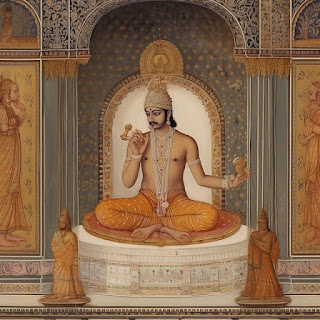Why Ashoka Attacked Kalinga ?
The reason behind why Ashoka attacked Kalinga was both political and commercial. Here we discuss the reason in brief :-
1. Expansion of the Mauryan Empire: Ashoka sought to expand the boundaries of the Mauryan Empire, which was one of the largest empires in ancient India. Kalinga, located on the eastern coast of India, was a prosperous and powerful kingdom at the time. Ashoka may have viewed the conquest of Kalinga as a strategic move to extend his empire's dominion and control over important trade routes.
2. Kalinga's Resistance: Kalinga had a reputation for independence and resistance against foreign invasions. It is possible that Ashoka saw the kingdom as a threat to his authority and sought to assert his power by subjugating Kalinga.
3. Personal Ambitions and Glory: Like many rulers of his time, Ashoka may have been driven by personal ambitions for power and glory. Conquering a powerful kingdom like Kalinga would have enhanced his reputation and solidified his position as a powerful emperor.
4. Revenge or Deterrence: Some theories suggest that Ashoka's decision to attack Kalinga was motivated by a desire for revenge. It is believed that a previous Kalinga king had invaded Ashoka's empire, and Ashoka sought to avenge the past defeats. Additionally, Ashoka may have intended to send a message to other kingdoms and discourage any potential rebellions or challenges to his authority.
 |
| Samrat Ashoka |
History OF Kalinga And Maurya Empire
Around 261BC the Mauryan empire Ashok marched his army from the capital city of Patliputra to Kalinga. Ashok was great emperor of his time ,he has been the emperor of Patliputra from more than eight years. And the kingdom of Kalinga was the only major power in the Indian sub continent that was not conquered by Ashoka.
Before Chandragupta Maurya founded kingdom of Kalinga it was conquered by the Nandas. We know this because of an inscription called Hathigumpha inscription. After fall of Nandas the empire of Kalinga was conquered by Mauryan empire.
Story of Rani of Kalinga (Padmavati)
 |
| Princess Of Kalinga (Padmavati) |
After the death of King Kalinga, Ashoka went to open the door of Durga of Kalinga, when he saw Queen Padmavati there who was accompanied by a large army of other women. The flame of vengeance for his son and husband was clear in his eyes. Ashoka said that Magadha's army does not attack women. The women of Kalinga shamed Ashoka for killing her husband.
After this Ashoka adopted Buddha Dharma. And he decided to marry Rani Padma. He also had a son named Kunal.
Life Of Ashoka Change After Kalinga War
After the battle there was no celebration. The air stunk of rotting fleshes , rivers become red with blood. Over 100,000 people were killed and 150,000 were displaced. Ashoka realize how diasterous the war war. He could not get over that he was a massive murderer .
After this he come across a buddhist monk name Nigrodh who was the son of Sisum. Despite Ashoka killed his father Nigrodh eyes had no sorrow and anger for him. This experience move Ashoka forever.
Here's what happened to Ashoka after the Battle of Kalinga:
1. Spiritual Awakening and Conversion to Buddhism
2. Ashoka's Edicts and Policies: After embracing Buddhism, Ashoka embarked on a mission to promote the principles of dharma (righteousness) and implement policies that would benefit his subjects. He issued a series of edicts, known as the "Ashokan Edicts," which were inscribed on pillars and rocks throughout his empire. These edicts proclaimed his commitment to social welfare, religious tolerance, and moral governance.
3. Spread of Buddhism: Ashoka's conversion to Buddhism had a significant impact on the spread of the religion. He actively supported the propagation of Buddhism, both within his empire and beyond.
4. Construction of Stupas and Monasteries: As a devout Buddhist, Ashoka sponsored the construction of numerous stupas (relic mounds) and monasteries. The most famous example is the Great Stupa at Sanchi, which stands as a testament to Ashoka's patronage of Buddhism.
5. Peaceful Rule and Legacy: Following the Battle of Kalinga, Ashoka focused on maintaining a peaceful rule and implementing policies that would improve the lives of his subjects. He promoted economic development, built infrastructure such as roads and rest houses, and established hospitals and veterinary clinics. Ashoka's reign is regarded as a period of relative peace and prosperity in ancient India.


0 टिप्पणियाँ
Hey guys, if you liked the blog or have suggestions for us please comment it down. It will help us to improve😊